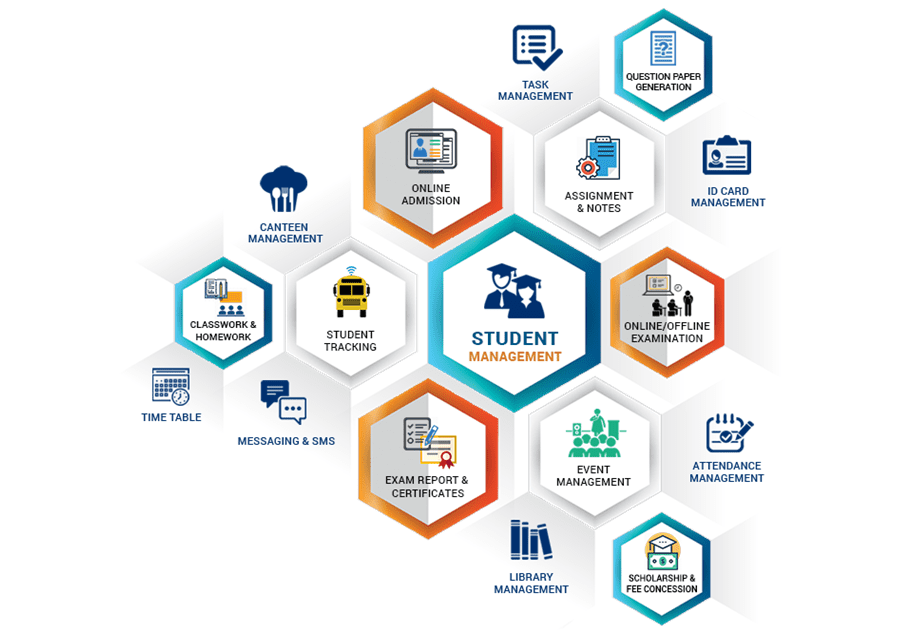- 1. How Does Student Management Software Centralize and Organize Student Data
- 2. Utilizing Student Management Software for Academic Planning and Course Registration
- 3. The Role of Student Management Software in Fostering Student Engagement
- 4. Leveraging Student Management Software to Track Student Progress and Performance
- 5. Conclusion

Higher education institutions rely heavily on student management software to streamline administrative processes, improve communication, and increase productivity. With the help of this software, universities can efficiently handle student records, enrollment, course registration, and grades. Student management software automates these procedures so that the academic staff and professors can concentrate more on important educational tasks, thereby improving student learning. Also, this program enables smooth communication between instructors, staff, and administrators, facilitating collaboration and prompt dissemination of crucial information.
How Does Student Management Software Centralize and Organize Student Data
- Improved Productivity of Teaching & Non-Teaching Staff: The centralization and organization of student data boost both teaching and non-teaching staff’s productivity. The database makes it simple to access and update all student data, including contact information, attendance history, academic performance, and disciplinary records. As a result, there is no longer a need for manual record-keeping. Also, finding specific student data takes less time and effort.
- Analyzing Student Performances Efficiently: Student management software makes it possible to analyze student performance effectively by centralizing student data. Grades, test results, and other performance indicators of students are readily accessible for analysis by faculty members. This information can be used to pinpoint areas in which children are having difficulty, enabling teachers to offer prompt interventions and personalized support.
- Better Parent-Teacher Relationship: Parent-teacher collaboration and communication can improve with student management software. Through a parent portal, parents can view their child’s academic progress, attendance history, assignments, and other relevant data. Also, a strong parent-teacher relationship can be fostered through the software’s collaboration tools.
- Increased Data Security: Data security is improved by using software for school and student management. Student data is securely maintained and shielded from loss or unwanted access with a centralized system. Only authorized users are able to access and edit student information owing to access control, user authentication, and encryption methods. To prevent data loss, additional precautions like regular data backups and disaster recovery strategies are also put in place.
- Streamlined Communication: Student management software acts as a central hub for administrators, instructors, students, and parents to exchange data and notifications.
- Save Resources like Time & Money: The software saves time and money by automating administrative procedures and minimizing paperwork. It allows the staff to concentrate on key instructional activities and reduce the costs associated with manual operations.
Utilizing Student Management Software for Academic Planning and Course Registration
Here is how student management software assists with course enrollment and academic planning:
- Centralized Course Catalog: A consolidated course catalog with comprehensive information about available courses, course descriptions, and schedules is available on the software. To make well-informed choices regarding their academic plan, students can simply browse the catalog, and compare various course alternatives.
- Real-Time Course Availability: Students can have access to real-time information regarding course availability using student management software. When registering for classes, students can browse open slots and make wise decisions.
- Course Planning: The capacity to build and manage course catalogs is one of the key benefits of student management software. Course information such as titles, descriptions, prerequisites, and credit hours can be simply entered by teachers and other professionals. This unified system enables quick course updates and modifications, guaranteeing accurate and current information for students.
- Registration Management: Teachers and staff can quickly create and share online course registration forms using this software. By doing so, you can get rid of manual paperwork and save time. The software also enables the customization of registration forms, giving teachers and staff the opportunity to collect the precise data needed for any course or program.
- Waitlist Management: Educational institutes can add the automated waitlist functionality with the help of the software. When a class is full, prospective students can sign up for a waitlist to indicate that they’d like to enroll in the near future. The waitlist is automatically managed by the software, which updates positions according to priority factors like enrollment date or student status.
- Academic Advising Integration: During the course selection and registration process, advisers and students can communicate with ease. Advisers can offer advice, keep track of students’ academic development, and make sure that the courses they choose are aligned with their academic objectives.
The Role of Student Management Software in Fostering Student Engagement
To improve communication, collaboration, and interaction among students, the software offers a number of tools and capabilities.
- Online Collaboration and Discussion Forums: The software often includes online collaboration and discussion portals where students can engage with faculty, staff, and instructors. By facilitating academic debates, group projects, and knowledge exchange, these platforms help in creating a welcoming and interesting learning environment.
- Personalized Communication Channels: Software for student administration provides individualized communication channels. The software integrates with many email and messaging solutions for hassle-free communication. These tools make it possible for students, teachers, advisers, and administrators to communicate clearly and promptly.
- Access to Learning Resources: Access to digital learning resources, including e-books, research databases, and multimedia assets is possible with student management software. Students can readily explore learning materials and go deeper into topics of interest.
- Mobile Access and Notifications: Mobile applications are available on many student management software platforms, enabling students to stay connected and involved from anywhere. Students who have mobile access can get crucial notifications, updates, and reminders regarding assignments, due dates, and campus events.
- Academic Progress Tracking: Teachers can monitor the academic progress of students in real-time with the help of this software. Students have access to their course schedules, grades, and attendance data, which enables them to monitor their progress and take proactive measures to do better. The software promotes self-reflection, goal creation, and enhanced engagement with academic goals by offering transparency and empowering students to track their progress.
Leveraging Student Management Software to Track Student Progress and Performance
These are some strategies for using student management software to monitor academic development and performance:
- Centralized Student Records: A central repository for student data, including grades, attendance logs, assignments, and exams, is provided by student management software. Educators can effectively watch each student’s development over time, get insights into their academic achievement and spot areas that need attention.
- Real-Time Grade Tracking: With student management software, teachers and parents can instantly track students’ grades.
- Performance Analytics: Software for student management offers strong analytics features that let teachers conduct in-depth evaluations of students’ performance. These analytics tools can produce charts, reports, and visualizations that show student and class performance information.
- Early Warning Systems: Student management software identifies students who need extra attention. It tracks several indications like attendance, assignment completion, and performance patterns. The warning signs enable instructors to step in quickly, offer focused interventions, and assist kids in getting back on track.
Conclusion
Higher education institutions can use student management software to handle data centrally, expedite procedures, and improve communication. It boosts output, ensures effective performance tracking, enhances parent-teacher communication, and guarantees data security. Institutions can improve administrative workflows, encourage student participation, and create a more effective and student-centered educational environment by utilising student management software.







